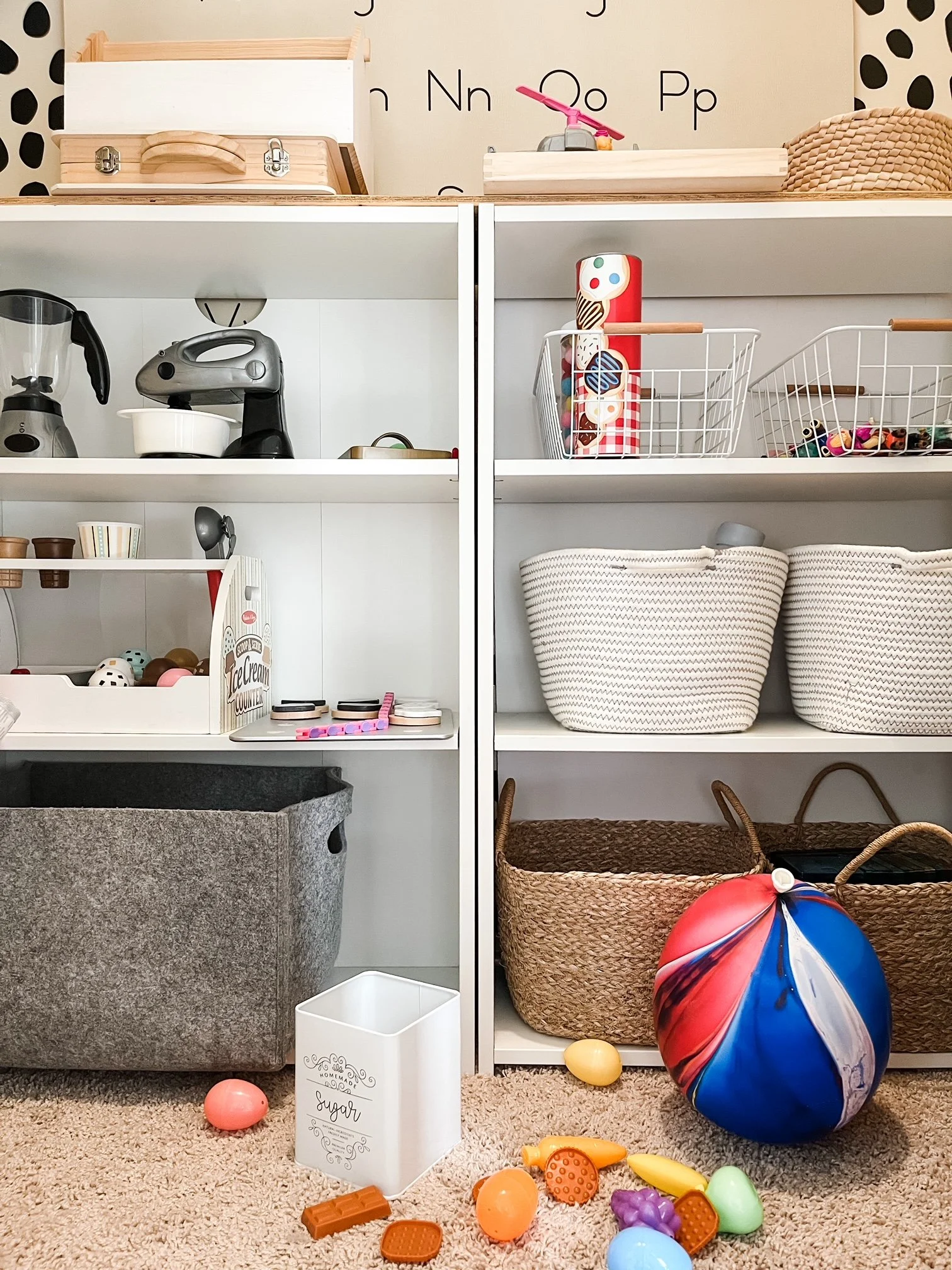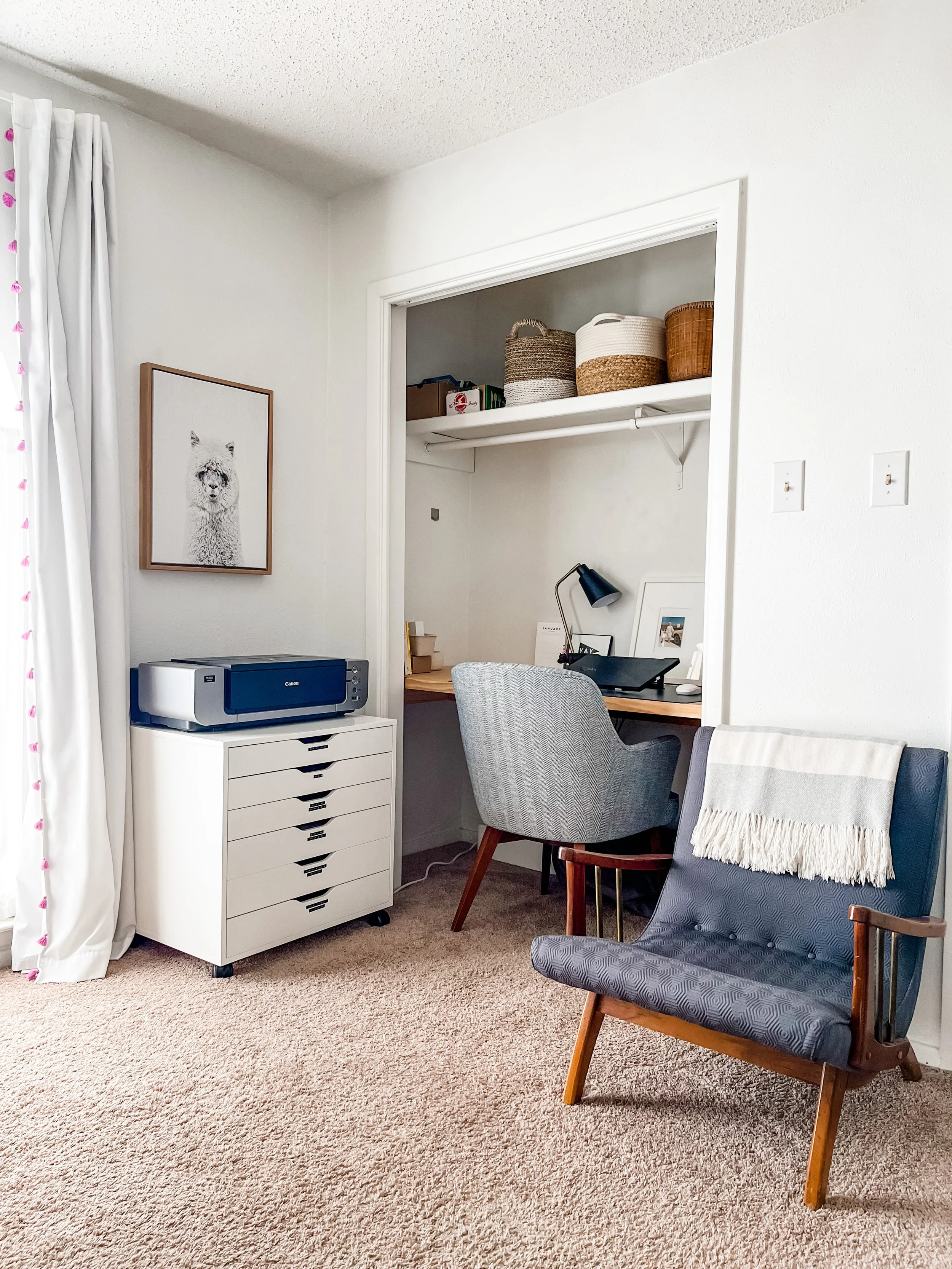How To Know When To Declutter In Your Home: 5 Red Flags To Look For
Knowing when to declutter in your home can be confusing. Sometimes you’re just not sure if it’s time or if it’s worth your effort to do it right now. The benefits of decluttering are well known, yet it can still feel hard to carve out time to do it. Today we’re going to talk through 5 “red flags” (obvious indicators) that your space needs decluttering. If you notice one or more of any of these red flags going on in your home, you’ll know it’s time to take a moment and declutter that area. Keep this list handy so you can reference back to it often!
This is our front entry coat closet turned “play closet”. If I look in there + there’s stuff everywhere, it can definitely stress me out. But before I spiral, I do a quick reality check in. 1) Are my kids deep in play? If yes, leave it. 2) Can we add this to a reset time later or get their help with it? Yes. Carve out a few minutes later on to pick up that spot. 3) If I notice a consistent pattern of the kids not being able to pick up things, a light declutter might be needed because they’re trying to manage too much in that zone.
You look around + you can see/feel the clutter chaos.
Your space feels triggering for you and you can feel that it’s not working. It is creating unnecessary stress when you’re in the space or when you catch it in your sight lines. Even when we can’t quite put our finger on WHY a space is giving us anxiety, we know it needs our attention. I would say 9.5 times out of 10 reducing what is in the space to essentials is the key to resolving this.
You’re struggling to find things.
There’s a lot of looking and digging. You open up a drawer and you can’t find the kitchen utensils you need for a simple kitchen task. You can’t find the pen you always use to take notes with. Your kids are always losing shoes or their favorite toys. You can’t remember where you put that important note that came in the door last week. You can’t find what you thought you had in the pantry to get dinner started. You’ve given up several times looking for something you needed but just couldn’t find it and didn’t have the time to continue searching. This is a big one. It wastes so much of your time.
You see stuff collecting on your horizontal surfaces.
When you look around at counter tops, tops of tables, desks and furniture, you see a lot of stuff. I’m not talking about when the surface is actively in use (cooking a meal, kids creating artwork or doing homework at the table, etc.). I’m also not talking about simple gesture of joy in your home (fresh flowers, a bowl of a your favorite fruit out, etc.). These horizontal surfaces, if we aren’t diligent in carefully selecting what gets to stay out on them, things will inevitable collect on them. Think about each item out on a horizontal surface in your home, then look at each item carefully. Do you need it? If so, does it need to be out to be helpful/useful? Could it be tucked away? It is worth the space it is taking up this surface or would having more space be MORE helpful? Each item out on these horizontal surfaces, whether it is a counter top or the top of a piece of furniture, all grab for your attention. Too much attention grabbing and we become overstimulated and the attention fatigue easily creeps in without us realizing it. Do a quick horizontal surface “audit” anywhere in your home and feel free to thank me later!
You don’t have a plan for when things get put away.
Real reality, we life in our homes and we use things so stuff gets left out, causing lots of visual clutter. No problems there. The problem surfaces when we don’t have a plan for when we need a sweep through of spaces to put things away to clear this visual clutter. Some clutter is simply things that need to put away (like coats put back in a closer or toys back in their bin). Other clutter is excess because we are keeping things that we don’t actually use or need. When these two combine, it’s dangerous. We clutter up the things we actually need/use/love with things we don’t. That’s where things get messy, literally and figuratively. A plan to remedy this (aside from decluttering) is to put things away in small bits throughout the day, pick one time a day to do a quick round up to reset your home (yes, recruit help if you have it), or pick a few days a week to reset the spaces in your home.
This is a highly active landing spot in our home that can go from mass chaos to orderly in a snap, which is why I love it so much. We need to aim to create lots of these spaces in our home that can ebb + flow with our daily life. Some items get temporarily hung up or set on the bench + then put away later on when we can.
You put off addressing a cluttered zone because you think it will take a lot of time.
Truth, it will take some amount of effort to improve any area of your home, small or large. It will take some time to put things away and reset any space. But on the flip side of this, your brain is VERY GOOD at making things seem WAY WORSE than they actually are. The longer we delay things the more challenging and overwhelming we perceive them, when they likely haven’t changed much. If you’ve identified an area or a few in your home like this, not to worry. Pick any spot of your choice and use my timer method (5 to 20 minutes) and declutter this zone. The goal will be simply remove anything that doesn’t need to be there. Either relocate things that shouldn’t be there and are more useful in another location OR remove items that need to be donated/recycled/tossed. Keep only with is useful, helpful and valuable to you in that area and eliminate the rest. See what you can done in a short amount time. Put on some good music while you work. I can guarantee you’ll be blown away at what you can do in a small amount of time focusing on one small area.
If you find yourself identifying with one or more of these “red flags” in your home, just know that relief from the clutter chaos can happen by focusing on small areas in less time that you’d think. Your efforts will continue to give back to you daily but way of saved time, energy and mental bandwidth. Yes please!
Want to get this decluttering party started but aren’t sure where to go next? Here’s a few options for you to get you moving + motivated.
Free Declutter Guide, Learn the basics of Decluttering, Schedule Decluttering Support, Donate Your Decluttered Items For Good Links











